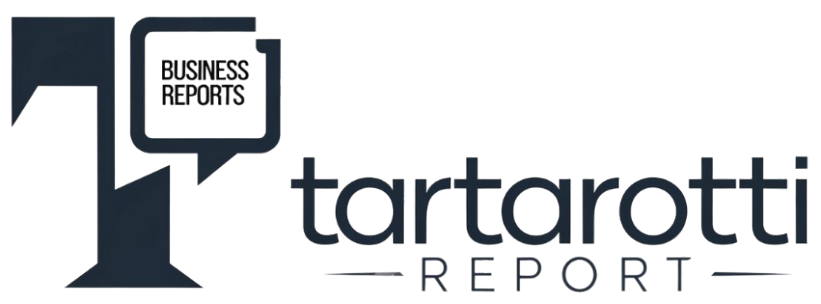Introduction:
In the global wealth management landscape, asset protection has become an increasing priority for high net worth individuals, families and businesses. International trusts and foundations have emerged as sophisticated and effective instruments in this context, offering robust solutions for wealth preservation and transfer.
Recent data from the “Global Wealth Report” shows that global private wealth will reach US$418 trillion by 2023, with a projected growth of 5.3% annually until 2026. This substantial increase in global wealth underscores the critical importance of advanced wealth protection strategies.
As an international wealth planning expert and consultant with more than two decades of experience assisting global clients, today I will unravel the complexities and opportunities offered by international trusts and foundations. This comprehensive guide will provide crucial insights on how to utilize these structures to protect and preserve your assets in an effective and compliant manner.
This article is designed for high net worth individuals, family offices, multinational company executives and wealth management consultants looking for advanced asset protection strategies. We’ll turn complex legal concepts into practical strategies, empowering you to make informed decisions about structuring and preserving your global wealth.
Part 1: Ready to Roll 🚀 – Basic Strategies and Practical Actions
Part 1, “Ready to Roll”, offers practical actions and immediate advice for entrepreneurs who need quick and effective guidance.

1. Fundamentals of International Trusts and Foundations
Before we dive into specific strategies, it’s crucial to understand the basic concepts:
- International Trusts:
- Legal arrangement where the settlor (creator) transfers assets to a trustee
- The trustee manages the assets for the benefit of designated beneficiaries
- They offer flexibility and potential protection against creditors
- Foundations:
- Autonomous legal entity without shareholders or owners
- Managed by a board in accordance with its statutes
- Popular in civil law jurisdictions, offering an alternative to trusts
2. Choosing the right structure
- Factors to consider:
- Asset protection objectives
- Settlor/founder’s jurisdiction of residence
- Nature and location of assets
- Succession and tax planning needs
- Popular Jurisdictions and Their Advantages:
- Cayman Islands: Robust legislation for trusts, strong financial sector
- Panama: Favorable legal regime for private foundations
- Singapore: Asian financial center with solid legal framework for trusts
- BVI: Reputation for stability and regulatory compliance
3. Practical Steps for Establishment
- For Trusts:
- Select a reliable and experienced trustee
- Draw up a detailed trust deed
- Transfer the assets to the trust
- For Foundations:
- Choose an appropriate jurisdiction
- Draw up the foundation’s statutes
- Appoint the board of directors
- Initial compliance:
- Carry out thorough due diligence on the origin of assets
- Implement KYC (Know Your Customer) policies
- Establish clear governance processes
4. Initial Protection Strategies
- Geographical diversification:
- Distribute assets across multiple jurisdictions
- Consider the location of physical vs. financial assets
- Protection clauses:
- Implement flee clauses in trusts
- Use discretionary powers of the trustee/advisory board
- Contingency planning:
- Develop plans for different risk scenarios
- Establish secure communication protocols
Part 2: Deep Dive 🤿 – Technical Depth in Advanced Strategies
Part 2, “Deep Dive”, provides in-depth analysis for those who wish to delve into the technical and complex aspects of international finance.

5. Detailed Analysis of Structures
5.1 Advanced Types of Trusts
- Asset Protection Trusts (APTs):
- Characteristics: Irrevocability, anti-alienation clauses
- Favorable jurisdictions: Cook Islands, Nevis
- Considerations: Timing of transfer, challenges of fraudulent conveyance
- Purpose Trusts:
- Use: Maintenance of specific assets (e.g. family businesses)
- Advantages: No beneficiaries required, can have perpetual duration
- Applications: Private trust company structures
- STAR Trusts (Cayman Islands):
- Unique features: Flexibility in defining purposes
- Applications: Investment vehicles, philanthropy
5.2 Hybrid and Innovative Structures
- Foundations with Trust Characteristics:
- Example: Private Interest Foundations in Panama
- Advantages: Combines legal certainty of foundations with flexibility of trusts
- Protected Cells:
- Application: Segregation of assets within a single structure
- Jurisdictions: Guernsey, Jersey
6. Advanced Asset Protection Strategies
6.1 Layering and Compartmentalization
- Layered Structure:
- Holding Company at the top
- Trust or Foundation as middle layer
- Operating entities at the bottom
- Benefits:
- Risk isolation
- Tax optimization
- Flexibility in asset management
6.2 Use of Protectors and Enforcers
- Role of the Protector:
- Supervision of the trustee
- Veto powers on critical decisions
- Enforcers in Purpose Trusts:
- Ensuring the fulfillment of the trust’s purposes
- Importance in the absence of beneficiaries
6.3 Distribution and Control Strategies
- Letters of Wishes:
- Non-binding guide for trustees
- Flexibility in long-term management
- Appointment powers:
- Ability to add or remove beneficiaries
- Flexibility in adapting to family changes
7. Compliance and Risk Management
7.1 Tax Transparency Challenges
- CRS (Common Reporting Standard) and FATCA:
- Impact on trust and foundation structures
- Compliance strategies without compromising privacy
- Beneficiary registers:
- Global transparency trends
- Approaches to maintaining privacy within legal limits
7.2 Mitigating Legal Risks
- Fraudulent Transfer Laws:
- Understanding challenge periods
- Documentation strategies and timing
- Conflict of laws:
- Choice of law clauses
- Considerations on recognition of foreign judgments
7.3 Governance and Ethics
- Responsible Investment Policies:
- Alignment with ESG principles
- Mitigating reputational risks
- Succession protocols:
- Planning for generational transition
- Education and preparation of heirs
8. Technology and innovation in wealth management
- Digital Trust Management Platforms:
- Solutions like TrustQuay for efficient administration
- Real-time dashboards for settlors and beneficiaries
- Blockchain and tokenization:
- Potential for trusts and foundations based on smart contracts
- Tokenization of assets for greater liquidity and divisibility
- Data analysis and AI:
- Using big data to optimize investment strategies
- AI-based compliance tools for continuous monitoring
- Advanced cybersecurity:
- Security protocols for protecting sensitive information
- Multi-factor authentication systems for access to trust/foundation information
Conclusion
International trusts and foundations offer powerful tools for asset protection and succession planning in today’s global scenario. However, their effectiveness depends on careful implementation in line with best compliance and ethics practices.
Key points to remember:
- The choice between trusts and foundations should be based on specific objectives and jurisdictional context.
- Layered structures and hybrid strategies can offer additional protection and flexibility.
- Compliance and transparency are crucial in today’s regulatory environment.
- Technology is transforming the administration and monitoring of these structures.
- Effective estate planning requires a holistic approach, considering legal, tax and family aspects.
As I always emphasize to my clients, asset protection should not be seen as a one-off event, but as a continuous process of management and adaptation. The structures of trusts and foundations must evolve with changing family circumstances, regulatory environments and long-term objectives.
To further deepen your knowledge and receive personalized guidance on how to use international trusts and foundations for asset protection, I invite you to participate in our upcoming webinar “Masterclass in Advanced Asset Protection Structures: Trusts and Foundations in 2024”. In it, we will discuss case studies, the latest innovations in asset structuring and strategies for navigating the complex global regulatory landscape.
FAQs
- Q: What is the main difference between an international trust and a foundation in terms of asset protection? A: The main difference lies in the legal structure. A trust is a fiduciary relationship where the trustee holds the assets for the benefit of others, while a foundation is a separate legal entity. Trusts generally offer more flexibility, while foundations can provide greater legal certainty in some jurisdictions.
- Q: How do recent global transparency initiatives affect the privacy offered by trusts and foundations? A: Initiatives such as CRS and beneficial ownership registries have significantly increased transparency. While total privacy is no longer possible, well-designed structures can still offer significant levels of confidentiality by focusing on legal compliance and legitimate asset protection.
- Q: What are the potential risks of setting up an offshore trust for asset protection? A: The main risks include:
- Legal challenges based on fraudulent transfer laws
- Tax complexities and risk of non-compliance
- Potential loss of control over assets
- Maintenance and administration costs
- Reputational risks if not structured properly
- Q: How do I choose the ideal jurisdiction for a trust or asset protection foundation? A: The choice of jurisdiction must take into account:
- Strength of asset protection legislation
- Political and economic stability
- The jurisdiction’s international reputation
- Tax treaty network
- Establishment and maintenance costs
- Residency requirements or local presence The final decision usually involves a balance between protection, costs and practical considerations.
- Q: What are the future trends in the use of trusts and foundations for asset protection? A: Some emerging trends include:
- Increased use of hybrid structures combining elements of trusts and foundations
- Integration of blockchain technologies for greater transparency and efficiency
- Increasing focus on ESG investments and strategic philanthropy
- Adaptation to global transparency regimes while maintaining legitimate protection
- Increased use of artificial intelligence in the management and compliance of asset structures

Member of the IMA (Institute of Management Accountants) – USA
Member of the AICPA (American Institute of CPAs) – USA
Member of AAII (American Association of Individual Investors) – USA
Member of AAA (American Accounting Association) – USA
Member of the FMA (Financial Management Association) – USA
These associations not only attest to Kleyton’s commitment to professional excellence, but also ensure that his knowledge is always at the forefront of international financial and accounting practices.
With a robust academic background, including a Bachelor’s degree in Accounting and MBAs in International Finance and Accounting, as well as in International Business, Kleyton offers a unique and comprehensive perspective on the global business landscape.
Through the Tartarotti Report, Kleyton invites visionary entrepreneurs and executives to connect, explore opportunities for collaboration and, together, successfully navigate the complex world of international corporate finance.







